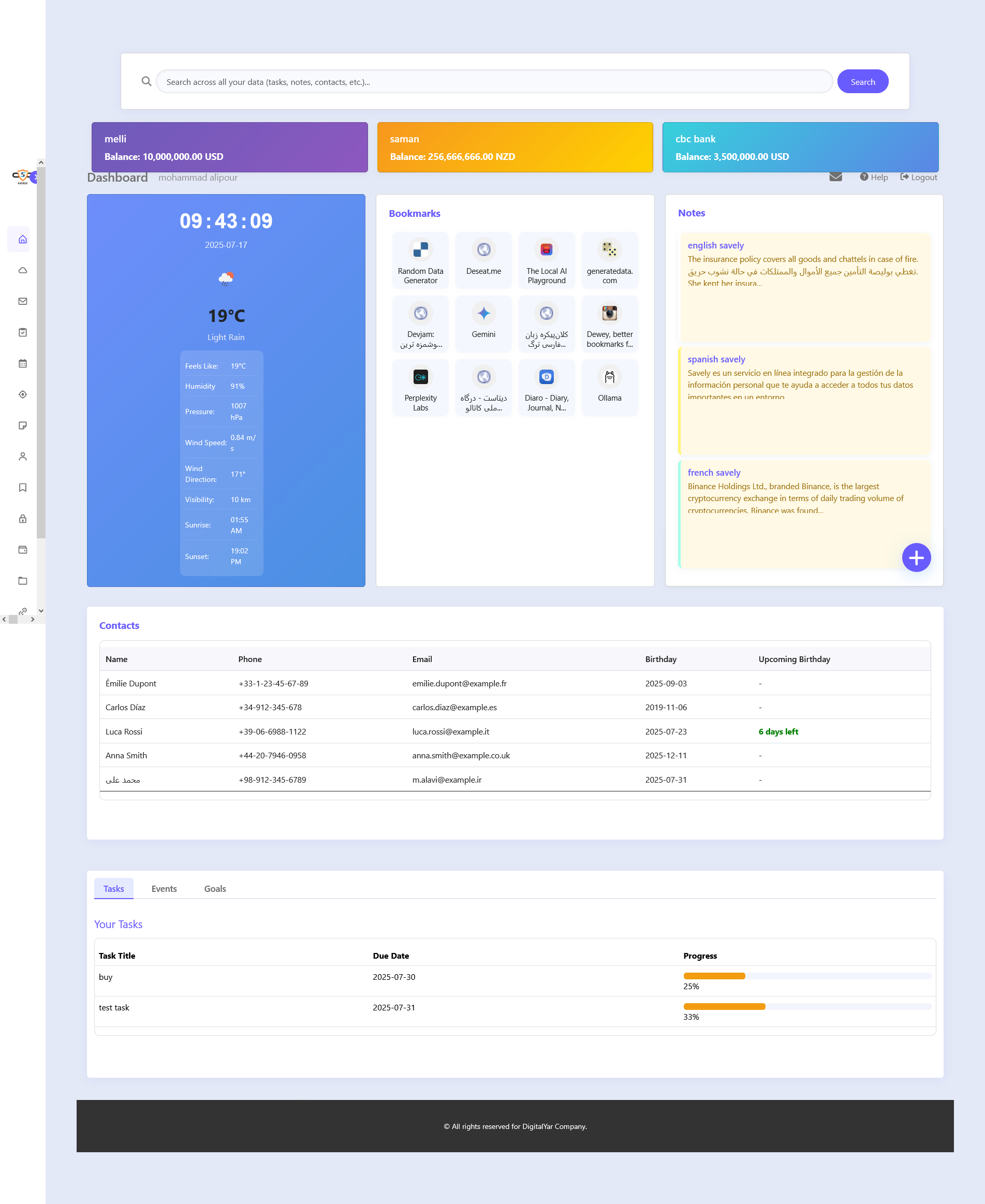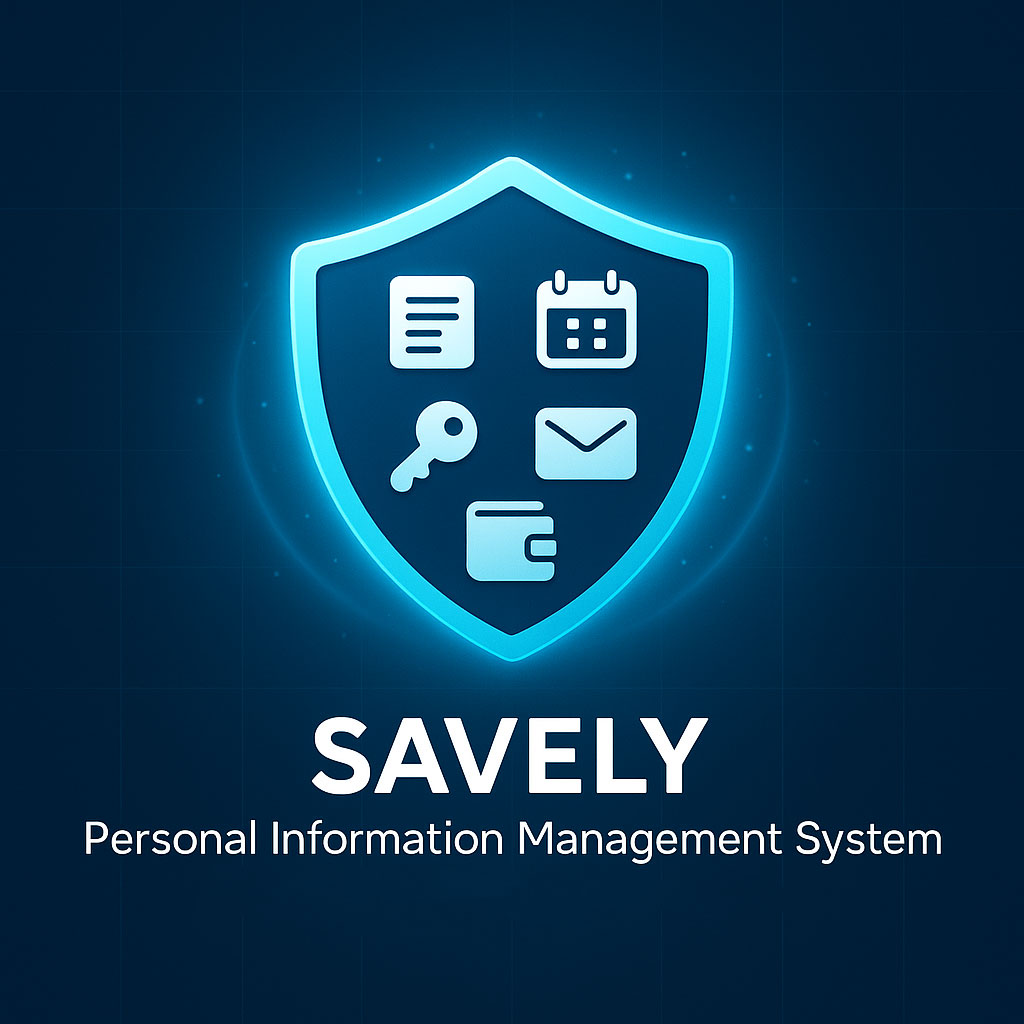1. What is Savely and what problem does it aim to solve?
Savely is a self-hosted Personal Information Management System (PIMS) designed to consolidate and organize all of an individual’s personal and work-related digital information. It aims to solve the common problem of scattered information across multiple applications and cloud services, addressing issues like forgotten passwords, disorganized files, and concerns about data privacy. Savely provides a secure, centralized solution to manage tasks, events, goals, notes, bookmarks, passwords, contacts, files, financial transactions, and emails in one unified environment, giving users complete control over their data.

2. What are the core advantages of using Savely compared to typical cloud-based services?
Savely’s primary advantages stem from its self-hosted nature. Unlike cloud providers that store user data on external servers, Savely runs on the user’s own shared or dedicated hosting (e.g., cPanel, DirectAdmin). This self-hosting model ensures:
- Superior Security: Advanced AES-256-GCM encryption is used to shield sensitive data, along with features like 2FA, session management, and activity logging.
- Absolute Privacy: All data remains on the user’s server, meaning no third-party ever accesses or sees the files and information.
- Total Control: Users retain complete ownership of their information, avoiding vendor lock-in and the limitations of mandatory subscriptions.
- No Monthly Fees: Savely is a “pay-once, own forever” solution, eliminating recurring subscription costs often associated with cloud services.
3. What types of information and tools does Savely integrate?
Savely acts as a “Golden Cube” for digital life, integrating a wide array of modules and tools into a single platform. These include:
- Organizational Tools: Tasks, Events (with multi-calendar support), Goals, Notes (with advanced editor and templates), Contacts (with birthday reminders), and a Bookmark Manager.
- Security & Data Management: Password Vault (with strong encryption), File Manager (secure storage on your own host, no cloud needed), Backup & Restore, Import/Export features, 2FA Authentication, Session Management, and Activity History.
- Communication & Productivity: Mail Client (multi-account support, encrypted), and a Link Shortener (with click tracking).
- Financial Management: Finance Tracker (for income, expenses, and budget management).
- Convenience: Weather Widget, and an Integrated Dashboard for a quick overview.
4. Who is the target audience for Savely?
Savely is designed for individuals and professionals who prioritize organization, security, and data control. Its target audience includes:
- Freelancers, Managers, and Professionals: Those needing precise, centralized organization for their work and personal life.
- Students, Researchers, and Writers: Individuals who require secure archiving and quick access to notes, files, and resources.
- Privacy-conscious Users: Anyone wary of public clouds and wanting to keep their data off external servers.
- Users Tired of Subscriptions: Individuals seeking an alternative to the recurring costs and limitations of popular online services, preferring a one-time purchase model.
5. How does Savely handle data security and privacy?
Savely implements enterprise-grade protection for data security and privacy. Key measures include:
- AES-256-GCM Encryption: Sensitive data, including passwords, contact details, and note content, is encrypted at rest on the user’s own host.
- Self-Hosting: Ensures data never leaves the user’s server, preventing third-party access.
- Two-Factor Authentication (2FA): Adds an extra layer of security for account access.
- Session Management: Allows users to view and remotely terminate active login sessions.
- Activity History: Provides a transparent log of all important actions within the account.
- Intrusion Alerts: Includes automatic account lockout after multiple wrong passwords and email alerts.
- CSRF Tokens and Input Sanitization: Protects against common web vulnerabilities like Cross-Site Request Forgery and injection attacks.
- GDPR Compliance: Ensures sensitive fields are handled according to privacy regulations.
6. Can users import and export data from Savely?
Yes, Savely offers robust import and export functionalities to ensure data portability and prevent vendor lock-in. Users can easily import data from other services in various formats, including CSV (for passwords), HTML (for bookmarks), VCF (for contacts), ICS (for events), and TXT (for notes). Similarly, data can be exported from Savely in these same formats, giving users complete control over their information and the flexibility to migrate it if needed.
7. What is the concept of Savely becoming a “Personal Operating System (POS)”?
Savely is presented with the potential to evolve into a Personal Operating System (POS) by offering an integrated suite of essential digital life tools. Instead of relying on numerous separate SaaS applications, Savely consolidates these functions into a single, secure, self-hosted platform. Each module, like task management or password vault, is considered a “golden cube edge” contributing to a complete digital life system. This concept emphasizes the idea of a comprehensive, user-controlled environment that moves beyond simple data storage to become a full-fledged system for managing all aspects of one’s digital life, free from SaaS dependencies and security concerns associated with external clouds.
8. What technical specifications and language support does Savely offer?
Savely is built on a modular PHP script with PHP 8.2, ES6, HTML5, and CSS3, utilizing a MySQL database. It incorporates various libraries like Leaflet, DataTables, and FullCalendar. Installation is guided by a 3-step wizard. For security, it uses bcrypt for passwords, prepared statements, and CSRF tokens. Savely also offers extensive multi-language support, with full native translations for 7 languages: English, Persian, Arabic, German, Italian, Spanish, and French. This includes full Right-to-Left (RTL) support for languages like Persian and Arabic, ensuring a truly localized and natural user interface.




No comment